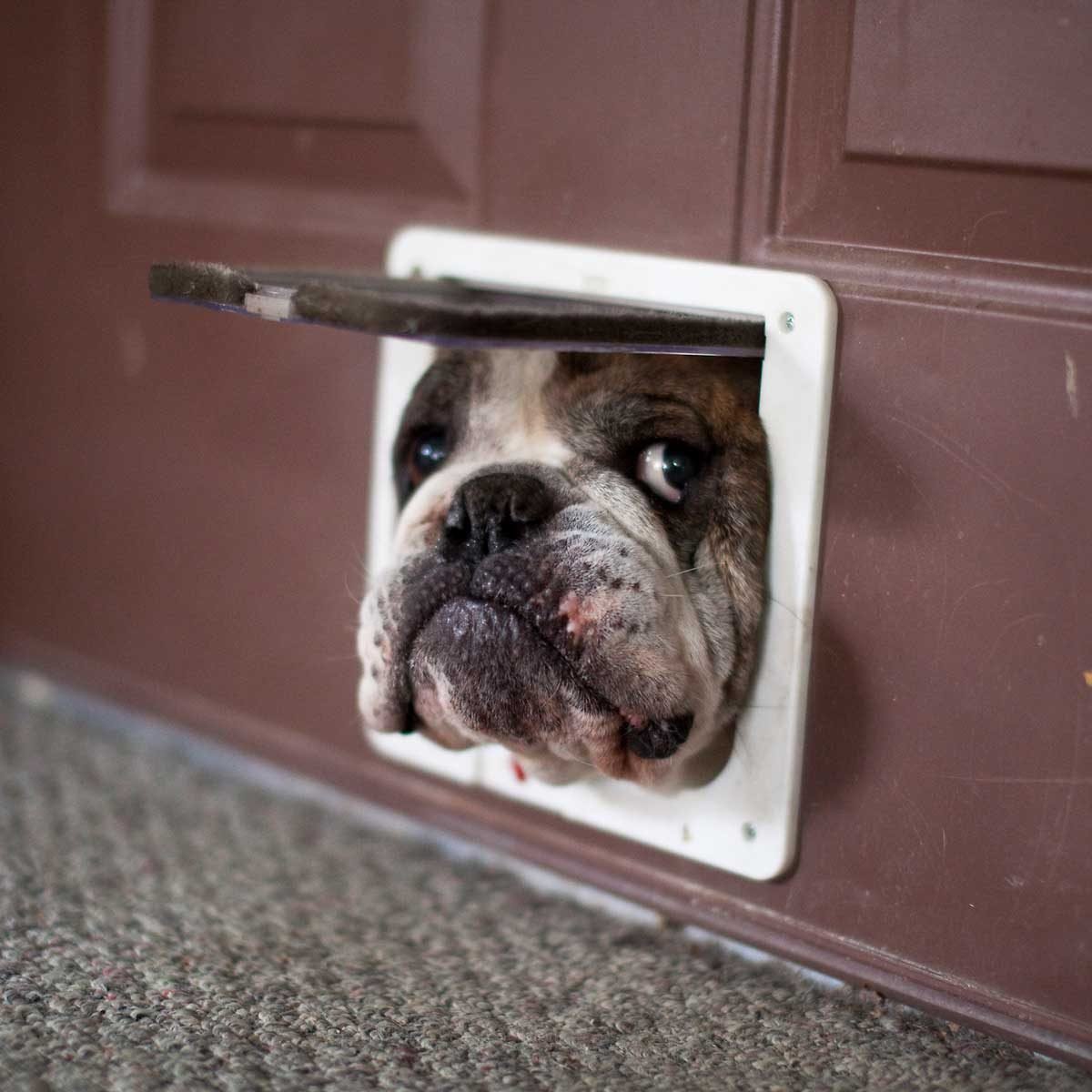If your pet uses a dog door, heat loss through the opening during winter is a concern. Here's how you can fix it.

Winterizing and Insulating a Dog Door: What to Know

Dog doors, a.k.a. pet doors, are small, covered openings cut in the bottom of exterior doors, designed for pets to easily go in and out of a house without the help of their owners. The idea is to give dogs and other pets more freedom. And with more than $450 million in pet doors sales in the U.S. alone in 2019, plenty of pet owners appreciate the benefits.
On This Page
Do Doggie Doors Let Cold Air in?
Although these are convenient, pet doors can make your home vulnerable to the cold. If you’re an animal lover and live where cold winters are the norm, your pet’s convenient entry point is probably allowing heat to leak from your home, adding to your energy bill. But don’t worry — there’s a way to achieve the best of both worlds. Learn how to winterize your dog door, enjoy minimal heat loss and maximum convenience for your furry friend.
Dog Doors for Cold Climates
If you haven’t purchased a pet door yet and are concerned about heat loss, your best option is to buy a door meant for cold climates. Standard pet doors with thin plastic flaps that move freely can let heat out of your home and increase your annual heating costs by six percent or more, according to a study by Green Builder Media. Dog doors meant specifically for minimizing heat loss in cold climates have a few features to look for:
Magnetic Weatherstripping
High-quality weatherstripping keeps your dog door sealed shut whenever it’s not being used, effectively stopping the warm air in your home from escaping.
Rubber or Plastic Flap

The material the flap your pet pushes open to get in and out matters. Choose a door with a fully weatherproof rubber or plastic flap that will shed water.
Double Layer Flap
No matter how tightly your dog door seals and how well it sheds water from outside, if it only has one layer of material separating your indoor and outdoor space, you’re asking for trouble. Heat will pass through a single layer alarmingly quickly, causing your energy bill to skyrocket all winter.
That’s where a double-flap design can help. At the least, choose a door with two flexible rubber flaps instead of one, ideally with a space between them, trapping air that acts as an insulator. Better yet, pick one with a rigid double layer door, with insulation or air permanently trapped between the layers.
If you’re particularly concerned about an airtight seal, as well as preventing wild critters from entering your home, consider an electronic dog door that seals automatically when not in use. This type of electronic dog door can be set to only open when your pet approaches, thanks to a microchip worn on their collar. Products like this have one major advantage over standard dog doors — a reliable seal between indoors and outdoors, broken only briefly when your pet passes through.
Winterizing a Dog Door
If you’ve already got a dog door and don’t want to replace it, consider winterizing it yourself. Here are some simple strategies that can improve your dog door’s winter performance:
- Use silicone caulk to close any air gaps and holes.
- Add weatherstripping around the door frame.
- Add magnets to the bottom of door so the flaps stay in place to help reduce heat loss.
- Reinforce flimsy door flaps with industrial plastic curtain material.
- Add a second door flap if you only have one.



















